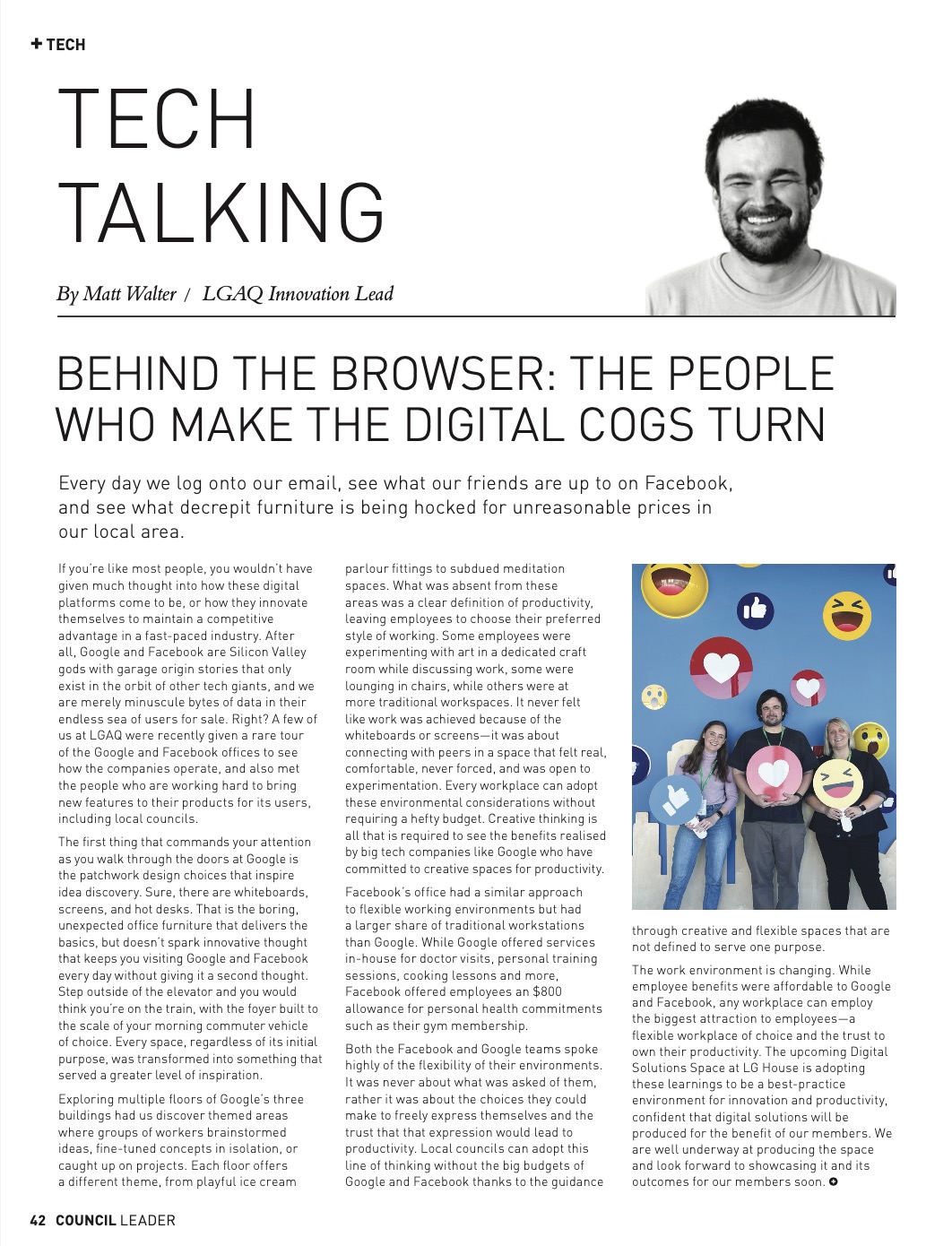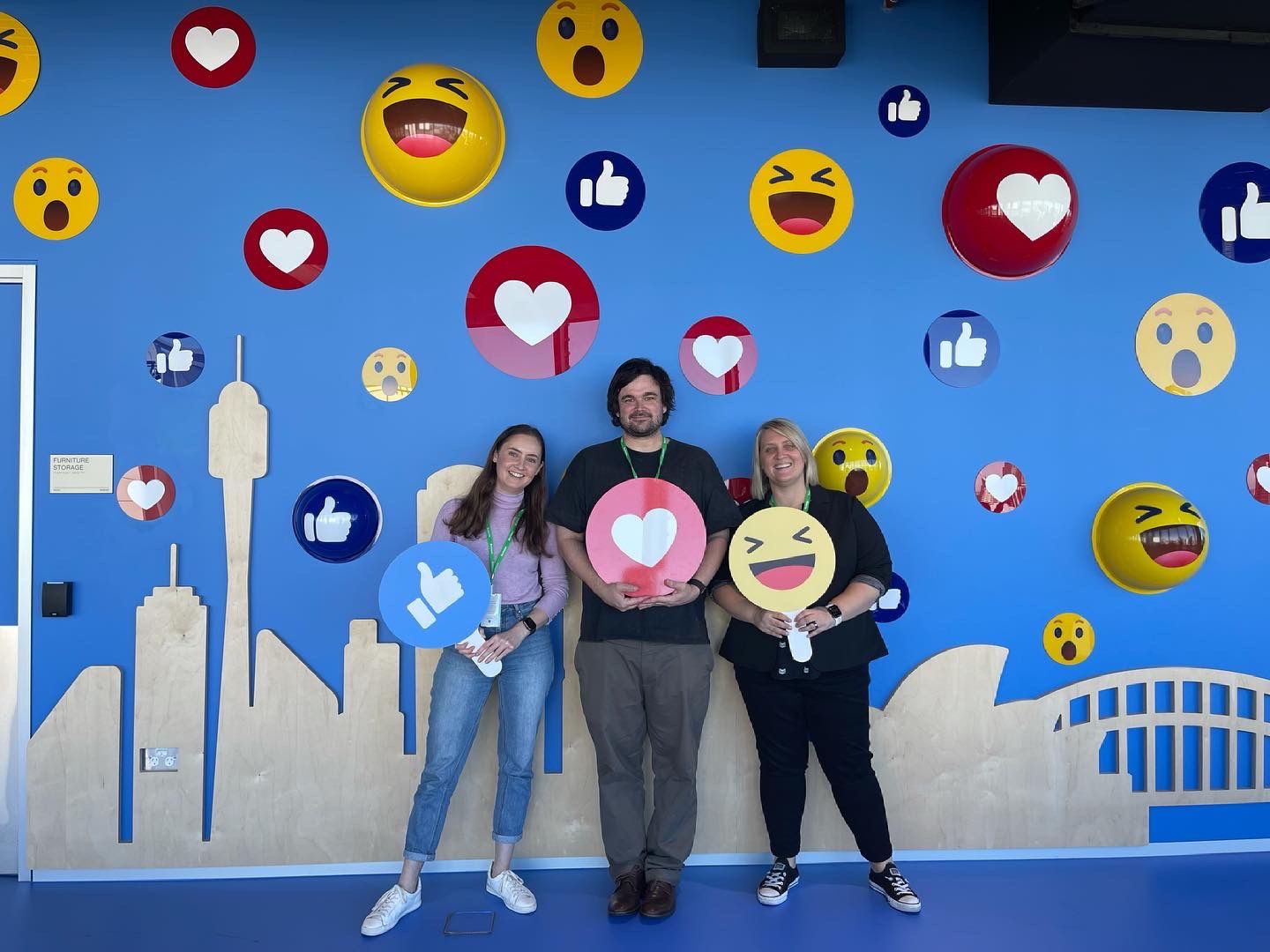The ‘Behind The Browser’ article in plain text
Every day we log onto our email, see what our friends are up to on Facebook, and see what decrepit furniture is being hocked for unreasonable prices in our local area.

If you’re like most people, you wouldn’t have given much thought into how these digital platforms come to be, or how they innovate themselves to maintain a competitive advantage in a fast-paced industry. After all, Google and Facebook are Silicon Valley gods with garage origin stories that only exist in the orbit of other tech giants, and we are merely minuscule bytes of data in their endless sea of users for sale. Right?
A few of us at LGAQ were recently given a rare tour of the Google and Facebook offices to see how the companies operate, and also met the people who are working hard to bring new features to their products for its users, including local councils.
The first thing that commands your attention as you walk through the doors at Google is the patchwork design choices that inspire idea discovery. Sure, there are whiteboards, screens, and hot desks. That is the boring, unexpected office furniture that delivers the basics, but doesn’t spark innovative thought that keeps you visiting Google and Facebook every day without giving it a second thought. Step outside of the elevator and you would think you’re on the train, with the foyer built to the scale of your morning commuter vehicle of choice. Every space, regardless of its initial purpose, was transformed into something that served a greater level of inspiration.
Exploring multiple floors of Google’s three buildings had us discover themed areas where groups of workers brainstormed ideas, fine-tuned concepts in isolation, or caught up on projects. Each floor offers a different theme, from playful ice cream parlour fittings to subdued meditation spaces. What was absent from these areas was a clear definition of productivity, leaving employees to choose their preferred style of working.
Some employees were experimenting with art in a dedicated craft room while discussing work, some were lounging in chairs, while others were at more traditional workspaces. It never felt like work was achieved because of the whiteboards or screens—it was about connecting with peers in a space that felt real, comfortable, never forced, and was open to experimentation. Every workplace can adopt these environmental considerations without requiring a hefty budget. Creative thinking is all that is required to see the benefits realised by big tech companies like Google who have committed to creative spaces for productivity.
The social media giant, Facebook, had an office had a similar approach to flexible working environments but had a larger share of traditional workstations than Google. While Google offered services in-house for doctor visits, personal training sessions, cooking lessons and more, Facebook offered employees an $800 allowance for personal health commitments such as their gym membership.

Both the Facebook and Google teams spoke highly of the flexibility of their environments. It was never about what was asked of them, rather it was about the choices they could make to freely express themselves and the trust that that expression would lead to productivity. Local councils can adopt this line of thinking without the big budgets of Google and Facebook thanks to the guidance through creative and flexible spaces that are not defined to serve one purpose.
The work environment is changing. While employee benefits were affordable to Google and Facebook, any workplace can employ the biggest attraction to employees—a flexible workplace of choice and the trust to own their productivity. The upcoming Digital Solutions Space at LG House is adopting these learnings to be a best-practice environment for innovation and productivity, confident that digital solutions will be produced for the benefit of our members. We are well underway at producing the space and look forward to showcasing it and its outcomes for our members soon.
Matthew James Oxlade
A digital leader that has delivered solutions for entities of all sizes including the Commonwealth Games, Brisbane City Council, local businesses and freelancers.I help fin-tech digital product teams to create amazing experiences by crafting top-level UI/UX.


